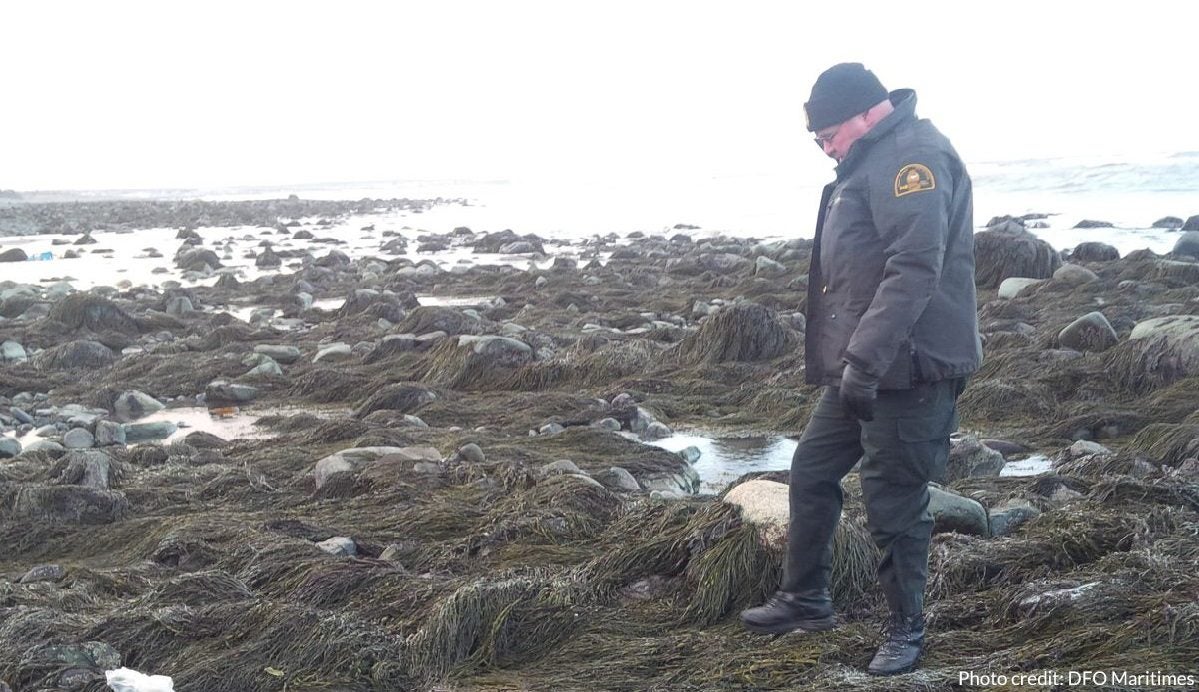January 18, 2017
What Dead Fish on Nova Scotia’s Shores Really Means for Canada’s Oceans
Estimated reading time: 0 minutes
The end of 2016 was met with a disturbing scene: dead marine life spread across the beaches of southwestern Nova Scotia. Images of a marine die-off left Canadians wondering what was going on in the ocean, as scientists scrambled to provide answers. Although we may not have the conclusive answers we were hoping to find, the incident highlights a critical point: nature is unpredictable and in order to adapt, we need healthy abundant oceans.
It started with herring
 Sightings of dead herring at Gilbert Cove in St. Mary’s Bay was first reported to Fisheries and Oceans Canada (DFO) on November 22, 2016. By the end of the week, local media outlets were reporting sightings of hundreds of dead and dying herring. DFO responded quickly, and testing was conducted to assess the cause. As we waited for results, even more species washed in with the tide, and soon beaches were covered with not just herring but also lobster, clams and starfish. There was great speculation about the exact cause and equally great concern about the crisis that appeared to be unfolding off of our shores.
Sightings of dead herring at Gilbert Cove in St. Mary’s Bay was first reported to Fisheries and Oceans Canada (DFO) on November 22, 2016. By the end of the week, local media outlets were reporting sightings of hundreds of dead and dying herring. DFO responded quickly, and testing was conducted to assess the cause. As we waited for results, even more species washed in with the tide, and soon beaches were covered with not just herring but also lobster, clams and starfish. There was great speculation about the exact cause and equally great concern about the crisis that appeared to be unfolding off of our shores.
Stephanie Boudreau, Oceana Canada’s Fisheries Scientist, visited two of the beaches “As the tide washed out at Savary Provincial Park you could see more herring and sea stars and crabs. It was really striking and unsettling. We followed the seagulls to Gilbert’s Cove and found all the herring on the beach, some very old, and again some dying. As someone from Southwestern Nova Scotia, this community relies heavily on the ocean for its livelihood. The fish kill was all everyone could talk about, it’s something that people could see, and directly links back to fishing. It was really hard to witness and indicated, at least to me, that there was something that happened at the ecosystem level in the Bay of Fundy.”
Many tests; few answers
Extensive testing conducted by DFO could not determine the cause of the herring mortality. There were no infections, no toxins or signs of physical injury, and the Bay of Fundy showed normal levels of temperature, salinity and oxygen. Acoustic surveys have also shown that there are large schools of herring still swimming in the area. It was an anti-climactic end to what appeared at first glance to be a catastrophe. Scientists are now referring to it as a natural event, but that does not mean we shouldn’t be concerned about Canada’s fish and oceans.

The larger, yet less visible fish crisis
Fish die-offs are not uncommon. What is different today is that marine life is under increasing pressure. When natural events occur, we need to have healthy populations capable of withstanding it, which Canada currently does not have. The herring population in the Bay of Fundy is in critical condition, along with many other species. In fact, less than half of Canada’s fish populations are considered healthy.
The health of Canada’s fisheries, and the communities and industries that rely on them, is precariously balanced on just a few fish species. What we can predict is that nature will continue to surprise us, and our ability to adapt depends on having a modern, science-based approach to fisheries management that will help rebuild and protect ocean abundance.
To achieve this, Oceana Canada is campaigning to protect marine habitat, reduce bycatch, modernize the Fisheries Act, and support sustainable and traceable seafood. But we can’t do this alone, we need passionate and engaged Canadians to stand up for the health of our oceans with us. The herring die-off in Nova Scotia may not have been the environmental crisis that we thought it was, but the oceans still need your support.
MOST RECENT
April 24, 2025
March 6, 2025
February 3, 2025
January 22, 2025
Celebrating New Beginnings in 2025: Four Right Whale Calves Spotted Off Florida Coast

